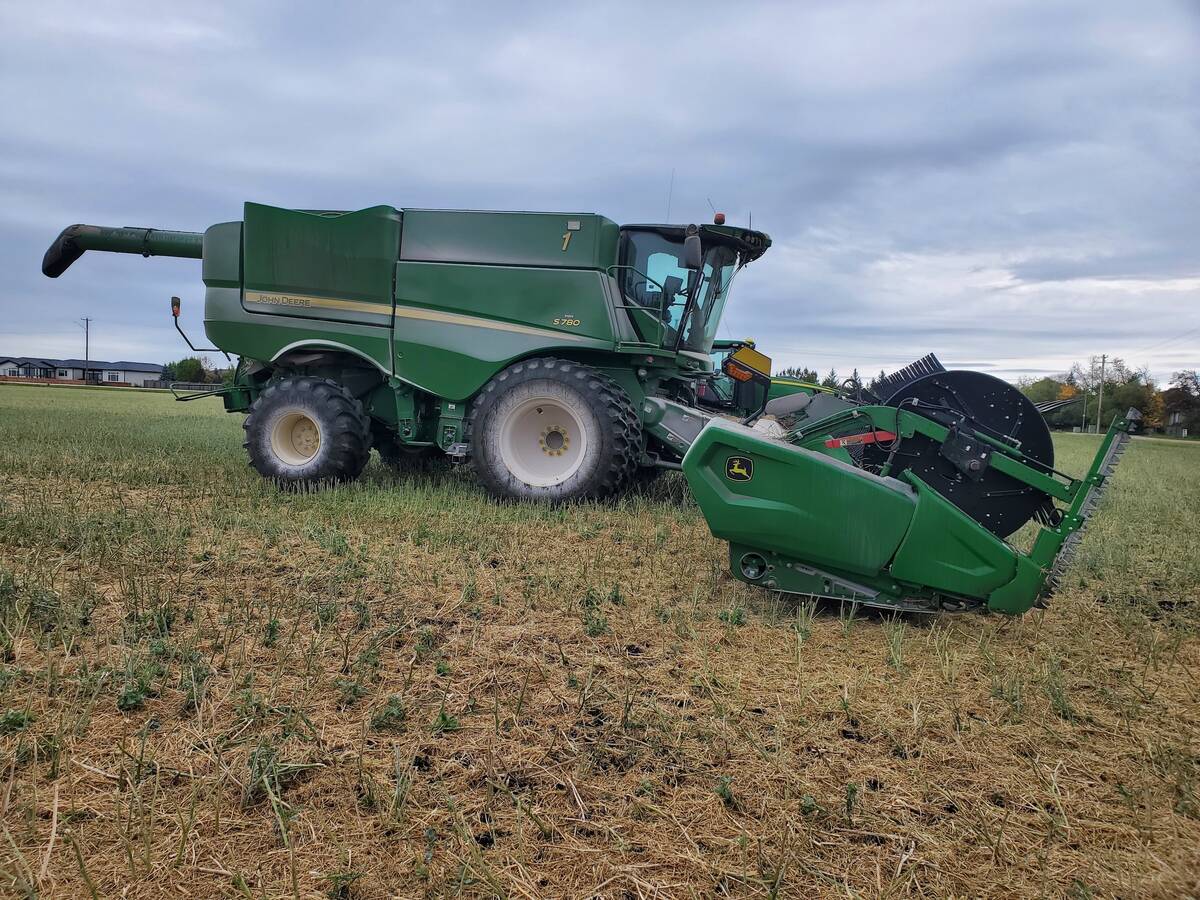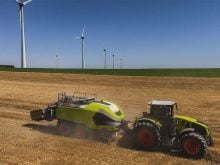More than half of Saskatchewan’s farmers have problems with ground
squirrels and experts from Alberta and Manitoba say their provinces are
not far behind.
Whether it is the seldom-seen, alfalfa-destroying pocket gopher of the
central and northern grain belt, or the pasture-perforating
Richardson’s ground squirrel of the central and southern regions, they
are a significant problem for farmers.
Doug Faller of Saskatchewan Agriculture said at a ground squirrel
conference in Saskatoon April 4 that reduced tillage, continuous
Read Also

Powdery mildew can be combine fire risk
Dust from powdery mildew can cause fires in combines.
cropping, conversion from grain to forage land, and dry weather
patterns seem to be improving habitat for the burrowing rodents.
They are capable of eating their weight in crop every day from the time
they are weaned. The damage begins to add up when their population
reaches the hundreds of millions.
A 2001 survey of Saskatchewan farmers showed that pocket gophers
damaged 3.4 million acres of Saskatchewan farmland. Richardson’s ground
squirrels, more commonly known as gophers, injured an additional 5.4
million acres. That is five and eight percent, respectively, of the
province’s arable land.
Pocket gophers caused severe damage in 2001, with 30 percent or more
crop loss plus equipment damage on 46 percent of the forage land where
they were found.
Richardson’s ground squirrels caused severe damage to one third of all
pastures where they were present, and 19 percent of all forage land.
They caused moderate damage to farmland, between 10 and 20 percent crop
loss, to one third of forages and pastures, and 25 percent of cropland.
As well, 25 percent of the farms that were surveyed reported livestock
injury due to burrows.
In Manitoba, the pocket gopher is a severe pest for alfalfa producers
from the forest edge in the southeast across the province to Brandon in
the west. Richardson’s ground squirrels then take over south of a line
that approximates the northern edge of the brown soil zone.
George Bonnefoy of the Manitoba Forage Council has spent his career
pondering the damage done by pocket gophers.
“It can be so severe that farmers will abandon forage production
altogether,” he said at the conference.
“Since the loss of the Crow (Benefit transportation subsidy), farmers
in Manitoba have had to get away from export grains …. Forages were a
good choice with strong dairy markets nearby in the (United States),
but gophers are now limiting for a lot of guys.”
Forage producers who grow alfalfa for the traditional hay or
dehydration industries say increased dirt from the mounded soil is
drawn into their bales and can ruin their markets.
“Dairy or dehy, they won’t accept higher ash levels in their hay,”
Bonnefoy said.
“And (growers) don’t want to leave any more crop in the field than they
have to when avoiding the mounds.”
Sid Zdrill, who farms at Alingly, Sask., said the cost to forage
growers in his area is “enormous.”
“Broken machinery, lost crop. They can easily be the difference between
turning a profit and not.”
Gilbert Proulx, a lecturer at the University of Alberta and a wildlife
specialist with Alpha Wildlife in Alberta, said there needs to be
concerted effort by industry and government if burrowing rodent
populations are to be controlled.
Faller’s study showed that the majority of producers who had problems
with ground squirrels tried to control them, but that only a minority
were satisfied with their efforts.
Proulx said controlling the pests has been a cyclical priority for
governments.
“They are interested in research for a while. Then they are not,” he
said.”There has been a lot (of research) done over the years. We know
what works and what doesn’t, but the ag community is not well informed.
Too many products that don’t work (are) on the market …. Farmers
haven’t gotten all the facts or the message hasn’t become part of their
day-to-day production information.”
He said there is not enough funding to support research into methods of
control or getting the results of that research into the hands of
farmers.
“As a result, at the end of the day, the gopher wins.”
















